Distorted Mirrors, Fogged Windows: A Call for Deeper Representation in Education
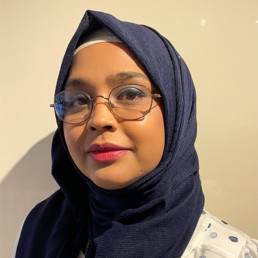
Written by Tamanna Abdul-Karim
Tamanna Abdul-Karim is Assistant Headteacher responsible for Literacy, Equality and Diversity in an inner city school in Birmingham. She has completed the NPQLL and Masters in Educational Leadership and Management /Level 7 Apprenticeship with the National College of Education. She is an English teacher at heart and her desire to create a sense of equality and justice motivates her. It is through education, she hopes to create impact and leave a meaningful legacy.
The concept of “mirrors, windows and sliding doors,” introduced by Dr. Rudine Sims Bishop, has become a foundational framework in conversations around diversity in children’s literature and multicultural education. In her metaphor, mirrors reflect readers’ own identities and lived experiences, windows offer insights into lives different from their own, and sliding doors allow readers to step into those other worlds, fostering deeper engagement and understanding.
This framework is not only relevant in literature — it has transformative potential across all aspects of school life. From curriculum design and cultural representation to enrichment opportunities and even staff recruitment, it offers a way to embed inclusion and equity into the very fabric of educational settings. When embraced authentically, it cultivates a culture where every student is seen, valued, and empowered.
However, if not approached thoughtfully, these mirrors and windows can distort reality. They can perpetuate stereotypes, invisibilise complexity, and contribute to feelings of alienation, shame, or disconnection — particularly for students from minoritised backgrounds.
A Personal Reflection: Distorted Mirrors, Fogged Windows
As a child of Bangladeshi heritage growing up in inner-city Birmingham in the 1990s, my school experience offered only two narratives about my country of origin: that it was poor and that it flooded. While these facts are not untrue, they painted a one-dimensional picture that deeply distorted both my self-image and my understanding of my heritage.
The mirror I was presented with reflected famine-stricken children, submerged villages, and chaotic streets. The window offered a view steeped in deficit — one that suggested my background was something to be downplayed, or even disowned. As a result, I internalised a sense of shame. I learned to code-switch early: Bengali at home, English at school. I adapted the way I spoke, behaved, even the way I ate — compartmentalising parts of my identity to belong.
What my schooling failed to reveal was a far richer, more complex history. I didn’t learn that before colonial rule, Bengal was one of the most prosperous regions in the world — a hub of culture, trade, and innovation. I wasn’t taught about the globally coveted Jamdani textiles, or that Dhaka was once one of the busiest ports on earth. There was no mention of how British colonial policies contributed to devastating famines, or how Bangladesh achieved independence through extraordinary resilience and sacrifice.
This erasure had consequences. It shaped how I saw myself — and how I believed others saw me. It taught me that some stories are celebrated, while others are sidelined.
Who Holds the Mirror? Who Builds the Frame?
This experience highlights a deeper issue: representation is not just about inclusion, but about how people, places, and histories are portrayed — and who gets to do the portraying.
We must ask: Who is holding up the mirror? Whose perspective shapes the window? What frames are we using to present narratives of identity, culture, and heritage?
It is not enough to simply provide visibility. We must examine the structures — the frames and lenses — through which these representations are filtered. If the frame itself is biased or incomplete, then the images it presents will be equally flawed.
A Call to Educators: From Representation to Reimagination
Educators carry immense responsibility. We are not only curators of knowledge — we are architects of perception. Every decision we make about curriculum, literature, resources, or enrichment shapes the mirrors and windows we offer to our students.
This work requires deep reflection. We must interrogate our own biases, challenge inherited narratives, and resist the temptation to present simplified or tokenistic views of cultures and communities. We need to move beyond surface-level inclusion to truly equitable representation.
This begins with unlearning — with a willingness to revisit what we’ve been taught, and to seek out the histories, voices, and perspectives that have long been marginalised.
Because when children see themselves reflected fully — in all their richness and complexity — they stand taller. And when they’re given a window into the full humanity of others, they grow kinder, more curious, and more connected.
Let us hold up better mirrors. Let us open clearer windows. Let us build sliding doors that do not just invite exploration, but also affirm belonging.
Empowerment, Inclusion, and Storytelling: A New Approach to History Education
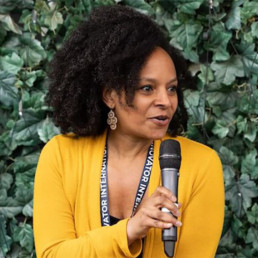
Written by Dana Saxon
Dana Saxon is an educator, writer, and family historian who seeks to address global inequities in education. Her organisation, Ancestors unKnown, changes the way pupils learn about history, themselves, and the world around them, providing opportunities for them to learn about marginalised histories and stories from their own communities.
Traditional history education can sometimes feel stale and uninspired – a series of dates and old white men who seem to have little or no relevance to the lives of today’s children. This approach, heavily focused on Eurocentric perspectives and the accomplishments of a select few, can leave many students feeling excluded and disconnected from the past.
But, as even Ofsted explained in their 2023 report about history education, “Every pupil is entitled to encounters with the richness of the past and the complexity of historical enquiry”.
A New Approach: Student Stories at the Centre
What if we reframed history education? What if we centred the learning experience around the unique stories of each child?
This is the vision driving Ancestors unKnown, a unique approach to history education that empowers young people by weaving their personal narratives into the larger context of local and global history.
At the heart of our methodology lies the belief that every child’s story is a valuable piece of the historical puzzle. We encourage students to explore their own family and community histories through oral histories and archival research. By interviewing elders, collecting family artefacts, and delving into local archives, children uncover the unique stories of their ancestors and the elders in their community, including their struggles, their triumphs, and their contributions to society.
Then, while our students are empowered to personalise historical research, we help them connect these personal narratives with the untold and often marginalised histories that have shaped our world. As a result, students learn about the contributions of diverse communities, stories about migration, struggles for social justice, and other hidden stories that lie beneath the surface of conventional historical narratives.
The Benefits of Ancestors unKnown
Our integrated approach fosters a profound sense of belonging and empowerment. When children see how their own stories connect to the larger historical narrative, they develop a deeper understanding of their place in the world. They begin to see themselves as active participants in history, not just passive observers.
Furthermore, by sharing their family histories with their classmates, children gain valuable insights into the diverse experiences and perspectives of those around them. This fosters empathy, understanding, and a greater appreciation for the people and communities around them.
With our approach, Ancestors unKnown is making history curriculum more inclusive and equitable. By centring the experiences of diverse communities and highlighting the contributions of marginalised groups, we challenge traditional narratives and create a more representative understanding of the past.
“Our community interviews were really successful!” shared a primary school teacher about their Year 5 Ancestors unKnown project.” We interviewed adults from South America, England, France, China and Nigeria! The children asked some really interesting questions and really enjoyed listening to the different family and community stories.”
Bringing Ancestors unKnown to More Classrooms
Ancestors unKnown provides schools with a toolkit and ongoing support to implement our programme during one school term for Y5 or Y6. We also offer teacher training, parent/community engagement workshops, and access to a network of local historians and storytellers as guest lecturers.
We believe that by empowering teachers, students, and their families with the tools and knowledge to uncover their own historical narratives, we can create a more inclusive and engaging learning experience for everyone.
Ready to transform history education in your school? Learn more about our programme and contact us to bring Ancestors unKnown into your classrooms.
Let’s work together to empower the next generation of historians to tell a different, more inclusive story about the past – a story that includes their ancestors.
Developing a PSHE Curriculum on Antisemitism, based on the teaching of Rabbi Lord Jonathan Sacks
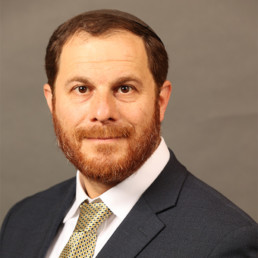
Written by Rabbi Cobi Ebrahimoff
Rabbi Cobi Ebrahimoff is UK Director of Education at The Rabbi Sacks Legacy, where his primary focus is to bring the teachings of Rabbi Sacks into schools and spearhead the development of innovative educational resources.
INTRODUCTION
Within living memory of the Holocaust, after which the world vowed “never again,” antisemitism has returned.
Rabbi Lord Jonathan Sacks offers a unique approach for students to understand why antisemitism is a danger for every single member of British society. In this four part series of lessons, students will explore:
- What is antisemitism?
- The stereotypes, prejudice and discrimination that Jewish people face
- The evolution of antisemitism and how it affects Jewish people today
- How antisemitism may affect them and how to combat it
BACKGROUND TO ANTISEMITSIM
Antisemitism is complex and often contradictory, making it difficult to define. Historically, Jews were persecuted for opposing reasons – being both poor and rich, communists and capitalists, isolated and too integrated.
So, what is antisemitism? It’s not just disliking someone for being different – that’s xenophobia. And it’s not simply criticising Israel – that’s part of democratic debate. Antisemitism is far more dangerous. It’s about persecuting Jews and denying them the right to exist as Jews, with the same rights as everyone else.
Over time, antisemitism has evolved, shifting from religious persecution in the Middle Ages to racial hatred in the 19th and 20th centuries, and now, targeting Israel’s right to exist. This new antisemitism uses human rights as a guise for prejudice.
Why should this matter to all of us? Antisemitism reflects a broader inability to accept difference. History shows that hate starting with Jews never ends with Jews. It’s a warning sign of threats to freedom, humanity, and the dignity of difference – issues that concern us all. That’s why combating antisemitism is a fight we must undertake together.
The Rabbi Sacks Legacy (RSL) is proud to present a new PSHE curriculum designed to provide a comprehensive framework for educating students about the historical and contemporary aspects of antisemitism through the prism of Rabbi Sacks’ unique approach. The curriculum aims to enrich students’ understanding of moral responsibility and create a deep appreciation of social diversity.
The curriculum meets Ofsted’s requirements to promote SMSC (Spiritual, moral, social, and cultural) development and fundamental British values. Under Section 5 inspections, Ofsted will consider how British values are promoted within schools, including the importance of tackling dis- crimination. Education on antisemitism directly supports these objectives, demonstrating the school’s commitment to creating a safe and inclusive environment for all students.
COMPREHENSIVE, READY-TO-USE RESOURCES FOR TEACHERS
Designed for teachers by teachers, the RSL PSHE curriculum comes complete with all the resources needed for seamless implementation. Teachers are provided with:
- Fully developed lesson plans with clear learning objectives aligned with SMSC and Departmental requirements.
- Differentiated activities to challenge higher-ability students and support those who need additional help, ensuring inclusivity in every classroom.
- Interactive multimedia content to engage students and bring complex topics to life.
- Assessment for learning tools to measure student progress and reinforce key challenges and benefits of living in a diverse society.
- Detailed teacher not and PowerPoint presentations, making it easy to deliver high-quality lessons with confidence.
To support high-quality delivery, teachers have access to high-quality training sessions and the opportunity to book expert-led workshops, ensuring that the curriculum is not only implemented effectively but also becomes an integral part of the school’s ethos.
ELEVATE YOUR SCHOOL’S COMMITMENT TO FUNDAMENTAL BRITISH VALUES WITH THE RSL PSHE CURRICULUM
In today’s educational landscape, the responsibility of promoting fundamental British values within schools has never been more significant. The Department for Education mandates that all schools actively promote values such as democracy, the rule of law, individual liberty, mutual respect, and tolerance of those with different faiths and beliefs. These values are integral to students’ spiritual, moral, social, and cultural (SMSC) development, forming the foundation of a cohesive and inclusive society.
The RSL PSHE curriculum empowers schools to fulfil these essential requirements. Developed with the insights of Rabbi Sacks, a leading voice in fostering interfaith dialogue and understanding, this curriculum is designed to address the challenges of antisemitism while broadening students’ understanding of diversity and respect for all.
CURRICULUM ALIGNMENT WITH SMSC DEVELOPMENT AND FUNDAMENTAL BRITISH VALUES
Promoting Mutual Respect and Tolerance
At the core of the curriculum is the “dignity of difference” principle, a concept championed by Rabbi Sacks. Through this lens, students are encouraged to explore and appreciate the benefits of our diverse society. The curriculum challenges students to confront prejudice, including antisemitism, and embrace differences with dignity.
Fostering Individual Liberty
The curriculum empowers students to think critically about the world around them, promoting individual liberty by encouraging them to form opinions.
Reinforcing the values of Democracy and the Rule of Law
The curriculum highlights the importance of the rule of law in protecting individual rights and minorities. It also promotes democratic values by encouraging discussions and debates, respecting different viewpoints, and understanding the processes that uphold democracy.
Enhancing SMSC Development
Through carefully structured sessions with clear learning objectives, differentiated tasks, and comprehensive assessment opportunities, students are guided to reflect on their moral responsibilities, develop social awareness, and cultivate a deep understanding of cultural diversity.
COMMIT TO EXCELLENCE IN EDUCATION
The RSL PSHE curriculum is more than just a teaching tool. It’s a commitment to fostering a school environment where every student learns the value of respect, tolerance, and moral responsibility. By integrating this curriculum into your school’s PSHE sessions, you are meeting Ofsted’s requirements and playing a vital role in shaping a generation that values diversity and upholds the principles of a just and inclusive society.
Build bridges. Break barriers. Adopt the RSL PSHE curriculum today!
The Hypocrisy at the Heart of Racist Riots
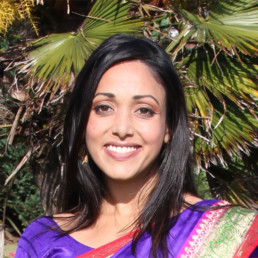
Written by Dr Nilufar Ahmed
Dr Nilufar Ahmed is a multi award winning Chartered Psychologist, Academic, and Accredited Psychotherapist. She works as an academic at the University of Bristol where her research and pedagogy focus on Inclusion and Engagement. Her work is situated in an antiracist and Intersectional framework. She is regularly invited to comment in the media on all things psychology and has delivered training, keynotes, and consultancy services across sectors including HE, business, and Government.
Originally published by The Conversation on 9/8/24
When news broke that a 17-year-old male had stabbed a number of young girls in Southport, misinformation swiftly followed. First, that the perpetrator was an asylum seeker or refugee who had come to the UK on a boat. This was discredited and information emerged that the individual was British-born. But the circulation of disinformation, including a fake, Arab-sounding name, led many to argue it must have been a Muslim male.
Though the perpetrator has no known links to Islam, violent, far-right rioters still mobilised to attack mosques. Islamophobic violence spilled onto the streets in the worst race riots Britain has seen in years.
The fact that this misinformation was so readily believed can be partly explained by psychology, and how we think about people who look like us, and about others who don’t.
People are conditioned to identify with their in-group – others who are like them on a range of markers such as race, gender, class or nationality. The maintenance of this shared identity largely requires “us” to be different (meaning better) than “them” by making negative inferences about them.
This automatic psychological response explains how people can see the self and the in-group as complex and fluid (for example, not all white people are criminals) but frame the out-group as homogeneous and fixed. This can lead, as we’ve seen, to some people casting all black men as dangerous, Muslims as terrorists, asylum seekers as opportunistic and refugees as “taking” jobs and healthcare resources, justifying the dislike and even hatred of the out-group.
The racism of this public reaction to a horrific attack on children is stark when you compare it to other recent events.
When a white male killed a 14-year-old black boy named Daniel Anjorin with a sword in May, protesters did not mobilise around the country to “protect children”. Neither were white men as a group deemed a threat to the safety of children.
Whenever crimes, however heinous, are committed by white perpetrators, they are more often viewed as the acts of an individual who was at fault because of mental health issues or falling in with the wrong crowd. There is a long history of disparate treatment of criminals in the media linked to race.
People are socially conditioned to think heinous acts are committed by outsiders. There are a number of cognitive biases at play here, including contextual bias, where decisions are influenced by background information rather than the crime itself, and affinity bias, where people prefer others who are like them.
These biases are present in individual cases, but also across the judicial system. Inequalities in sentencing perpetuate the narrative that people of colour are more dangerous and disposed to crime.
A study commissioned by the Crown Prosecution Service also found that people of colour are significantly more likely to be prosecuted than white people for the same crimes. Such inequity results in overrepresentation in prisons and with convictions. This then feeds the narrative that people of colour are more likely to commit crime – when in fact they are simply more likely to be prosecuted.
The Blame Game
In times of scarcity, this in-group/out-group bias can become simplified and exacerbated to justify withholding resources from the out-group, who the in-group perceives as “undeserving”. Out-group scapegoats offer an easy and reliable way of deflecting responsibility by those with power.
This is what has happened over the past 14 years in Britain. While the Conservative government created an unstable economic climate and deep poverty through cuts to public services and economic turmoil, it is politically convenient to suggest the reason for scarce resources is a small number of asylum seekers.
The previous government used the negative attitudes towards refugees and immigrants as a core pillar of its election campaign. Politicians used increasingly inflammatory language in relation to immigration, blaming immigrants for things like the housing crisis and depleted health resources as a way shifting attention from their cuts in spending.
Anti-racist counter-protests have organised all around the country. Simon Dack News/Alamy
Over time, the scapegoats have been boiled down to one homogenised group of people who are not white. This is apparent in the differential treatment of asylum seekers from Ukraine, who were welcomed to the UK and allowed to work and be housed.
Asylum seekers from the rest of the world are not allowed to work on arrival and receive just £49.18 a week. This feeds the narrative that white people work, while people of colour don’t (though somehow are simultaneously “taking our jobs”).
The relentless scapegoating dovetails with the psychological biases we are all socially conditioned to fall for, creating an “us” and “them” environment that can easily turn violent. The events of the past two weeks have awakened much of Britain to the consequences that can arise when society is defined this way.
Advancing Black history education in the UK
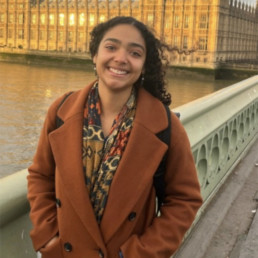
Written by Katie D'Souza
Katie D'Souza is a recent MA Education graduate, whose dissertation titled "Understanding the impact of 'our island story': exploring feelings of identity and belonging for Black British students" is currently under review for publication in the Curriculum Journal. Katie has since worked for a small business called The Educate Group, supports university staff to diversify their curricula and lead more inclusively, and now works at the Office of the Children's Commissioner, helping to ensure that the government listens to the voices of the children and young people living in this country.
Did you know that you can ask your MP to host a roundtable for you in parliament? The Black Curriculum (TBC) founder, Lavinya Stennett, certainly knew this, and last week took the opportunity to bring together key players in the Black history sphere for a critical discussion of Black history education in the UK, hosted by Bell Ribeiro-Addy MP.
TBC’s mission is to work with key stakeholders to embed Black history into the national curriculum. This roundtable sought to find practical and productive actions for ways to achieve this, and further cemented the determination for Black history to be meaningfully incorporated into the national curriculum, all year round.
With contributions from Professor Deirdre Osborne, expert in feminism, race and poetics, Michelle Codrington Rogers, citizenship teacher and NASUWT President, and award-winning history teacher and author Shalina Patel, amongst others, participants left this roundtable energised to arm the next generation of students (and ultimately leaders) with the comprehensive knowledge of history they need to navigate our increasingly globalised world.
A survey conducted by Bloomsbury in 2023 found that more than half (53%) of those surveyed could not name a Black British historical figure, and that only 7% could name more than four. The same survey suggests that less than 1 in 10 Brits believe that Black people have resided in England for more than 1000 years, assumptions erring towards 200 years, when in fact the answer in closer to 2000. Is this really the state of our history education system at the moment?
More can, and should, be done. Teaching Black history does not just build essential knowledge about structural and institutional racism, and Black brilliance, joy, and success. It also helps to create a sense of belonging for students with diverse heritage in UK classrooms, which may even serve to improve attainment and academic progress.
However, as it stands, the only mandatory (statutory) topic on the Key Stage 3 history curriculum is the Holocaust. Whilst the Department for Education has defended this set up as giving schools and teachers the freedom and flexibility to include Black history, in practice, the non-statutory nature translates as schools having little incentive to change their existing approach to history.
Shalina’s powerful account of her experience as a history teacher of 15 years spoke to the importance of the supportive leadership team in her school giving her both the time and resources to construct a department that is committed to building an inclusive history curriculum.
Unfortunately, this is not the case for everyone. When there is resistance to change at management and/or senior leadership team level, it can make it really difficult for teachers to do this important work alone.
Bell’s remarks further emphasised the role that teacher confidence and resources play in delivering a comprehensive Black history education. She reasoned that all teachers must be equipped to do justice to Black history in the classroom, so that the responsibility does not fall solely on teachers of colour. TBC’s resources are a great way to begin to do this, as Robert Primus, a secondary school history teacher, advocated, but this must be paired with some more concrete changes to the way history is taught in our schools.
Therefore, in the face of a general election in July, we urge the next government to consider the following asks from TBC and the other participants at this roundtable:
1 Introduce mandatory racial literacy training
The consensus at the roundtable was that we know teaching Black history is essential but that there are real, practical barriers to achieving this widely across the UK. TBC together with sisters Naomi and Natalie Evans who founded Everyday Racism ask that the next government introduces mandatory racial literacy training for school staff and leaders, under the rationale that racial literacy acts as a form of safeguarding for students from diverse backgrounds. Every adult interacting with children and young people must understand the intersectionality of identity in the UK and how the way that narratives and histories are told in the classroom deeply affects the sense of self and belonging of those listening. It’s imperative that teachers are given the time, headspace and resources to become more racially literate, and we believe making this training statutory is the way to make this happen.
2 Make Black history a statutory part of the curriculum
Recent RSHE guidance published by the Department for Education has proven that if they want to, the government is willing to prescribe what schools should and shouldn’t teach. Whoever forms the next government should make Black history a statutory part of the history curriculum. The reality is that value of teaching Black history for improving cultural understanding, increasing sense of belonging, and students seeing themselves reflected is unfortunately often overlooked by headteachers and senior leaders for whom the current school system places such great emphasis on grades and exam results. Making Black history statutory will support teachers to overcome challenge from their school leadership, as the content will be on official specifications and be included in exam materials too. There has already been some good progress in this space at Key Stage 4, where GCSE exam boards recently introduced a migration thematic study, covering migrants in Britain as well as the history of Notting Hill, but for the Key Stage 3 curriculum much remains to be achieved.
3 Equip teachers to meaningfully integrate Black history
Black history must not be seen as a tick-box exercise but should be meaningfully integrated into the curriculum. To realise this ambition, teachers must be equipped with the resources and empowered with the knowledge and confidence to do justice to Black history without ‘othering’ the stories of the past. For example, learning about Mansa Musa and the richness of West Africa before any mention of the transatlantic slave trade will support both teachers and students to reframe their understanding of Black history. Or when studying medieval England, to simultaneously look at medieval Mali, or Japan, or Baghdad. It is not necessarily a case of overhauling the whole curriculum, but weaving interesting and positive stories into the topics that are already so well known. It is about teaching a full history, not just the version constructed by the victors. As Bell summed up nicely, ‘you’re not learning a complete history if you’re not learning about black history’.
New Official Study Guide for GCSE Set Text Leave Taking by Winsome Pinnock
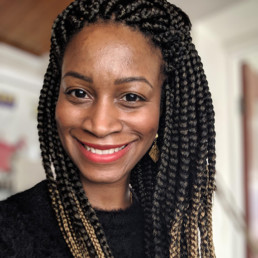
Written by Samantha Wharton
Samantha is a seasoned educator from East London, with ancestral roots tracing back to the Caribbean nations of Antigua and Guyana. She brings a wealth of academic achievements, including a degree in Communications and Media from Brunel University, a PGCE in English and Drama from the Institute of Education at University College London, and an MA in Black British Literature from Goldsmiths University.
A new official study guide for Leave Taking by Winsome Pinnock, authored by educators Samantha Wharton and Lynette Carr Armstrong, brings a fresh approach to GCSE English literature, enhancing the teaching and learning experience for GCSE English Literature students and teachers.
Samantha Wharton and Lynette Carr Armstrong bring a wealth of expertise from over 50 years of combined experience in education. As co-writers of this study guide, they have meticulously crafted an in-depth exploration of Leave Taking, ensuring that it delves into the nuances of the text with precision and clarity.
But what sets this study guide apart is its academic rigour and its authors’ lived experience and insight. As children of the Windrush generation, Samantha and Lynette possess a profound understanding of the worlds depicted in Pinnock’s play. Their lived experiences and living memories enrich the guide, providing readers with authentic perspectives that resonate with the characters and themes of Leave Taking.
Crucially, Samantha and Lynette had the privilege of consulting with Winsome Pinnock herself during the development of this guide. Pinnock’s invaluable commentary is woven throughout the text, offering readers a rare glimpse into the playwright’s mind and enriching their understanding of her work.
Leave Taking is not just another set text—it is a vital piece of literature amplifying Black voices and sharing insights into the Black British experience. Samantha Wharton and Lynette Carr Armstrong emphasise the importance of showcasing these narratives through Black voices with shared experiences. In a world where the Black experience has been historically erased, texts like Leave Taking must be unpacked and explored with sensitivity and nuance.
This study guide is more than just a pedagogical tool—it is a labour of love, insight, and experience. Samantha has taught Leave Taking at St Angela’s School in London, where staff and students have met it with enthusiasm. The diverse cohort of teachers at St Angela’s have thoroughly enjoyed teaching the text, while the students are excited to see modern characters that reflect their own experiences.
The release of the official study guide for Leave Taking by Winsome Pinnock marks a significant milestone in GCSE English literature. With Samantha Wharton and Lynette Carr Armstrong at the helm, educators and students can embark on a journey of discovery that celebrates Black voices, amplifies lived experiences, and enriches the educational landscape for generations to come.
The duo are committed to supporting teachers in implementing Leave Taking into the classroom. They will offer future training experiences, including workshops and seminars, to provide educators with the tools and insights to effectively teach this text. These training sessions will cover various aspects of the play, including thematic analysis, character studies, and classroom activities.
To inquire about future training opportunities or to reach Samantha Wharton and Lynette Carr Armstrong for further information on the study guide, educators can contact them via email at samantha.wharton@gmail.com and Lynettedcarr@hotmail.com. They are eager to collaborate with schools and educational institutions to enhance the teaching and learning experience of Leave Taking. They are available to answer any queries or provide additional support as needed.
The study guide has received recognition from Lit In Colour, a prominent platform championing diverse voices in literature. It was endorsed in their latest newsletter and featured in The (incomplete) Lit In Colour list, a curated collection of essential resources for educators looking to include diverse perspectives in teaching. This recognition reinforces the guide’s reputation as a valuable tool for promoting inclusivity and representation in education, making it indispensable for educators passionate about diversity and equity.
The official study guide for Leave Taking by Winsome Pinnock can be found through various channels. It is available on the Nick Hern Books website, the same publisher as the play, ensuring authenticity and reliability. Furthermore, the guide can be purchased on popular online platforms like Amazon!
The study guide and texts are available here:
https://www.nickhernbooks.co.uk/leave-taking-gcse-study-guide
https://www.nickhernbooks.co.uk/leave-taking-bundle-deal
https://www.amazon.co.uk/Leave-Taking-GCSE-Student-Guide/dp/1839041366
Press coverage about the play:
‘The godmother of Black British playwrights’ – Guardian on Winsome Pinnock
Guardian ‘Three decades since its debut Winsome Pinnock’s pioneering portrayal of the lives of black Britons feels shockingly contemporary… Pinnock was a pioneer and her piece still hits homethrough its often shocking honesty about the hazards facing black people in Britain’
Time Out ‘A devastatingly powerful story of a British-Caribbean family… whyWinsome Pinnock’s play isn’t on the English Literature syllabus is a mystery to me, given its shocking contemporary relevance… this play warms and devastates’
Two generations. Three incredible women. Winsome Pinnock’s play Leave Taking is an epic story of what we leave behind in order to find home. It premiered in 1987, and was revived at the Bush Theatre, London, in 2018, in a production directed by the Bush’s Artistic Director, Madani Younis.
Using stories and voices to combat the narrative of antisemitic hate: opportunities afforded by the Curriculum for Wales.
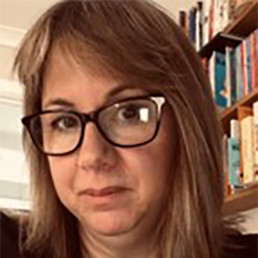
Written by Jennifer Harding-Richards
Jennifer is currently on secondment working as RVE and RSE adviser to schools across three local authorities as well as RVE adviser to the SACRE’s in each of the three authorities. She is passionate about education and especially keen on ensuring that social justice and equity are at the heart of all RVE and RSE curriculum planning, development and pedagogy within the Curriculum for Wales. She is the RE Hubs lead for Wales and a member of the steering committee for the Welsh Jewish Heritage Centre. She has previously worked as a freelance educator for the Holocaust Education Trust and has an MA in World Religions.
According to a recent report (ref 1), there were three times the numbers of antisemitic incidents reported across Wales in 2023, compared with 2022. The incidents which included threats, abusive behaviour and assault, represent a rise of 338%.
Wales is the first, and so far, the only home nation to have made the teaching of Black, Asian and Minority Ethnic histories a mandatory element of their curriculum and are committed to being an anti-racist nation by 2030. The anti-racist action plan (ref 2) includes the vision, values, purpose and strategies needed to support this and understandably, education has a large role to play.
The Curriculum for Wales, introduced in 2022, empowers individual schools to craft and cultivate their own unique curriculum. The aim of each school’s curriculum is to nurture students who are:
- ambitious, capable learners, ready to learn throughout their lives
- enterprising, creative contributors, ready to play a full part in life and work
- ethical, informed citizens of Wales and the world
- healthy, confident individuals, ready to lead fulfilling lives as valued members of society.
As we work towards an anti-racist nation, we are reminded about the power of education. Nelson Mandela’s infamous quote ‘education is the most powerful weapon with which you can change the world’ really resonates with the vision that we have in Wales. We know that far-right philosophies and beliefs are infiltrating mainstream culture, and our children are intoxicated with the images, speeches and behaviour of those that preach such ideologies. As educators, we have the responsibility to counteract such narratives and use our privileged position as curriculum designers and teachers to support our learners to become ethical and informed citizens, able to not only take their place within our diverse society, but to contribute and make positive change.
Wales has a rich, diverse and multi-cultural history. We have a rich legacy of inclusive education as well as a welcoming acceptance for the many diverse cultures and followers of faith that have made Wales their home. The story is told of how some of the first Jews in Wales, arriving in Merthyr Tydfil in the eighteenth century, peered through the windows of some local homes, and on seeing a Bible in every one, decided that this was a place where they could stay and be welcomed.
Using Welsh Jewish stories and voices within our school curricula, whilst obviously not eradicating antisemitism in its entirety, will help develop a generation of young people who are able to humanise and personalise others, avoiding stereotypes and challenge the narrative of the media and those with the loudest voices. We want our children to become ethical and informed citizens, capable of independent thought and able to critically engage with the toxicity of hate that surrounds us on a daily basis.
There are so many Welsh Jewish stories that deserve to be told, individuals who have helped shape our society and made a positive impact on others. Leo Abse, for example, a social reformer, and Labour MP for 30 years. He was influential in the shift in laws and norms towards the acceptance of homosexuality and divorce. We want our pupils to engage with discussion around his ideals and values and how they have changed Wales for the better. His aunt, Lily Tobias, had a multilingual childhood in Ystalyfera which fostered in her a political activism, a sense of social justice and a determination to try and change the world. Her legacy cannot ever be underestimated. Kate Bosse Griffiths, escaped Nazi Germany and along with her husband, became a founding member of ‘Cylch Cadwgan’, an organisation that welcomed and celebrated writers, poets and pacifists. Her own writing focused on her feminist ideals and sense of spirituality. She made a huge difference to those around her.
In working towards an anti-racist Wales, in celebrating and recognising cynefin (ref 3) and using our subsidiarity and autonomy to design our own bespoke curriculum for our learners, we have a real opportunity to use stories and voices to challenge stereotypes, antisemitic tropes and narratives of hate.
References
‘We’ve not seen this since the Holocaust’: Antisemitism in Wales up by 300% after outbreak of war:
Anti-racist Wales Action Plan
https://www.gov.wales/anti-racist-wales-action-plan-contents
‘cynefin’
A Welsh word for which there is no direct translation. It refers to the ideas of habitat and a sense of rootedness, It describes the environment in which one is naturally acclimatised.
Harmony in Heritage: Sharlene-Monique Unveils 'A New Life' For World Book Day
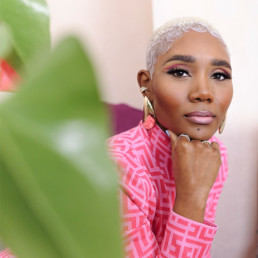
Written by Sharlene-Monique
Sharlene-Monique is a London based singer-songwriter, author and broadcaster. She is known as a versatile, passionate, authentic, collaborative creator and performer. Her three concept projects Destiny, Perspectiveand Raw & Honest Love combine evocative, soulful vocals with deeply inspiring songs of empowerment, love and self-acceptance with music to move and soothe the soul and spirit. As an independent artist and lead vocalist Sharlene-Monique has toured widely in Europe including as a support act for a 15 date UK tour with the pop legend Gabrielle.
Renowned Singer-Songwriter-Broadcaster Sharlene-Monique is set to release her second book, A New Life, a heart-warming picture story celebrating the hope, courage, and determination of the Windrush generation. Scheduled for release on Tuesday, March 5, 2024, for World Book Day. Sharlene-Monique navigates the loss of her grand-parents by sharing their inspiring journey in A New Life. The book recounts the true story of Winston and Mavis, who, in 1958, embarked on a courageous journey from Jamaica to London, laying the foundation for a new life for their family.
The experiences of their great-granddaughter, Tahlia, unfold as a poignant narrative, resonating with young readers aged 3-7. It is made all the more special by the viral TikTok video that captured the spirited dance of Sharlene-Monique’s 90-year-old grandparents, viewed over 500,000 times across multiple social media platforms.
A New Life stands as a valuable resource for children, offering insights into the Windrush generation’s experiences. It sparks conversations about family stories, resilience, and the passing down of talents and interests through generations. Serlina Boyd, founder of Cocoa magazine, praises the book as “a beautiful picture book that tells the story of the brave arrival of Tahlia’s Great-Grandparents embarking on their new life in Britain. A wonderful read for the whole family.”
Sharlene-Monique is known for; her heartfelt song ‘Thank You’, released in June 2023 to commemorate the 75th anniversary of the Windrush generation which continues to make waves and was featured on ITV, her recent hosting of the Melanated Stories documentary series on TBN UK and a supporting role in the 15-date tour with UK pop legend Gabrielle showcase her multifaceted talents. Sharlene also continues to sing with the Kingdom Choir since their unforgettable performance at the 2018 Royal Wedding in front of a global televised audience of 2 billion people. With a background in education and as an award-winning children’s choir conductor, Sharlene-Monique adds depth to her artistic endeavours.
Reflecting on the book, Sharlene-Monique shares, “When I shared the video of my grandparents dancing, I had no idea the response would be in the thousands, it brought so much joy to people. This book will ensure their legacy will live on for many years to come, and I am so proud of that.”
A New Life: Available for pre-order now via sharlenemonique.com
Available at amazon.co.uk Tuesday, March 5, 2024
For interviews and more info, please contact sharlenemoniq@gmail.com
Facebook | Twitter | Instagram | TikTok| Website
Black History Month: Dismantling inequalities in education for better outcomes
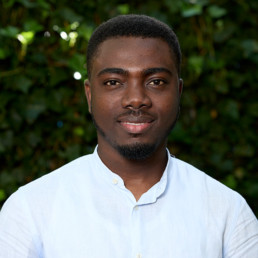
Written by Henry Derben
Henry Derben is the Media, PR, and Policy Manager at Action Tutoring - an education charity that supports disadvantaged young people in primary and secondary to achieve academically and to enable them to progress in education, employment, or training by partnering high-quality volunteer tutors with pupils to increase their subject knowledge, confidence and study skills.
Before the pandemic disrupted education, students from Black ethnic backgrounds had the lowest pass rate among all major ethnic groups at the GCSE level. However, the 2022-23 GCSEs marked a notable shift from the pre-pandemic period, with Black students on average achieving similar English and maths pass rates comparable to students of other ethnic groups.
Black History Month is celebrated in October each year in the UK to recognise the historic achievements and contributions of the Black community. It is also a prime moment to reflect on the state of education and how it can be reshaped to create a more equitable and inclusive future.
As part of activities to mark Black History Month at Action Tutoring, we had an insightful conversation on how to ensure better outcomes and a more enabling environment for Black pupils in schools with Hannah Wilson, a co-founder of Diverse Educators, a coach, development consultant and trainer of Diversity, Equity, and Inclusion practice. Hannah’s former roles in education include head of secondary teacher training, executive headteacher, and vice-chair of a trust board.
Below are some highlights of the conversation.
Re-examining Black history in the UK curriculum
Black History Month in the UK often focuses on the celebrated figures and events in mostly Black American history, such as the civil rights movement and famous Black personalities. However, Hannah highlights an important criticism – the lack of focus on UK Black identities.
“We want to move to the point where Black culture and identity are integrated throughout the curriculum,” Hannah explains, advocating for a more inclusive and comprehensive approach. The celebration of Black identity is that it’s often a lot of Black men being spoken about and not Black women, queer people, and disabled people. Thinking about that intersectionality and looking at the complexity and the hybridity of those different parts of identity often gets overlooked as well.”
A new Pupil Experience and Wellbeing survey by Edurio shows that pupils of Any Other Ethnic Group (48%) are 21% more likely to rarely or never feel that the curriculum reflects people like them than White British/Irish Students (27%). Additionally, Mixed/Multiple ethnic groups (16%) and Black/African/Caribbean/Black British students (18%) are the least likely to feel that the curriculum reflects them very or quite often.
Unpacking performance gaps
Data has shown that while a high percentage of Black students pursue higher education, they often struggle to obtain high grades, enter prestigious universities, secure highly skilled jobs, and experience career satisfaction. The journey to understanding the root causes of these educational disparities is a complex one.
Hannah recommended the need to rethink career education and the lack of diversity, equity, and inclusion strategies that often work in isolation.
“I don’t think all schools are carefully curating the visible role models they present. The adage about if you can’t see it can’t be it, and the awareness around the navigation into those different career pathways. I think that is saying that schools could do better. There’s a bridge there to be built around the pathways we are presenting as opportunities on the horizon for young people as well. Representation within the workforce is another key aspect. We need to address the lack of Black representation in leadership positions, not only in schools but also in higher education.”
The early years and disadvantage
Disadvantage often begins at an early age. Children from low-income backgrounds, including Black children, start school at a disadvantage. Hannah pointed out that the key to dismantling this cycle lies in reimagining the curriculum, the approach to teaching, and in valuing cultural consciousness.
“It’s important to start with the curriculum. The curriculum in the early years should be diverse and inclusive. The thought leaders within that provision or within that key stage are often quite white. That’s often the disconnect at a systemic level when it comes to policymaking around provision for the early years. Who is designing the policy for the early years? Who’s designing the curriculum for the early years? Are we being intentional about representation in the early years?”
“However, we need to move beyond simply adding diversity as a “bolt-on.” Their representation should be integral to the curriculum, not an afterthought. As young as our children join the education system, what can we do differently from the get-go to think about identity representation.”
Breaking the concrete ceiling
While tutoring is a viable method to help bridge the gap for underperforming students, Hannah stressed the need to change the system fundamentally. Rather than continually implementing interventions when problems arise, it’s best to revisit the structure of the school day, the diversity of teaching staff, and the core content of the curriculum.
“It has to start with the curriculum, surely tutoring and mentoring all of those interventions like mediation support mechanisms are so powerful, we know that make up the difference. But what are we actually doing to challenge the root cause? We have to stop softball. We’re often throwing money at the problem, but not actually fixing the problems or doing things differently. We need a big disruption and conscious commitment to change, but it needs to be collective.”
“We need to address the concrete ceiling that often prevents Black pupils from accessing leadership opportunities. Career guidance, sponsorship, and mentoring should be part of the solution to break these patterns. Collective action is essential to create lasting change.”
The power of engaged parents
Change should also start at home. Parents and guardians play a crucial role in a child’s education, particularly in the early years. Hannah suggests a shift in the dynamic between schools and parents.
“Thinking about how we work with parents and create a true partnership and collaboration. That to me, is what some schools perhaps need to revisit – their kind of plans, commitment, or the ways they work with different stakeholders. Engaging parents more closely is definitely a way of helping them get involved in schools so they’re part of that change cycle.”
The call to action for allies
In conclusion, Hannah’s powerful call to action focuses on allyship, encouraging non-Black people to actively support and contribute to the ongoing struggle for equity and inclusion in education.
I think for people who identify as being white, the reflection and awareness of your own experience with schooling, where your identity is constantly being affirmed and validated because you saw yourselves in the classroom, in the teachers, in the leaders, in the governors, and in the curriculum, that’s often taken for granted. It’s time for us to step back, see those gaps, and to appreciate how that affirms us, but how that could actually really erode someone’s sense of self when they don’t see themselves in all of those different spaces.”
There should be a conscious intention that educators make about what they teach, who they teach, and how they teach it, to really think about representation and the positive impact it has on young people. And being very mindful that we don’t then just perpetuate certain stereotypes and not doing pockets of representation and pockets of validation.”
Hannah’s insights underscore the urgency of addressing the disparities in our education system. As Black History Month wraps up, let’s heed the call to action and take collective steps toward a more inclusive and empowering education system that taps and nurtures the potential of all young Black students.
How we can make archaeology more inclusive
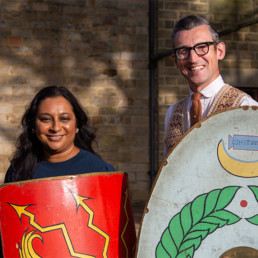
Written by Raksha Dave
Raksha Dave is an archaeologist, broadcaster and president of the Council for British Archaeology, within which also sits the Young Archaeologists Club. Raksha also works with arts organisations to help them find ways to encourage diversity and inclusivity in their environments.
When people ask me about how we can make archaeology more welcoming and inclusive, I often think about my four-year-old self. I was obsessed with dinosaurs and begged my mum to buy me a book about them. It opened my eyes to a new world. I still have the book. I found a world that I obsessively wanted to discover and felt as much right as any child to do so.
My teachers encouraged and supported my passion, fueling my interest through their teaching. No one ever doubted I could be an archaeologist. No one ever said that this was a profession where, even as recently as in 2020, 97 per cent are white.
The next generation of brilliant archaeologists aren’t teenagers, they’re children. We need to engage them in the subject, but we’re failing. The profession needs to do better at communicating that archaeology isn’t just about ditches and digging if it’s to widen its appeal.
Archaeology is about the remains people leave behind whether that was an hour ago or 3,000 years ago. When any child opens their door, they are immersed in an archaeological environment: old signs on the sides of buildings; windows bricked up; changes in the architecture and age of buildings; and old boundary markers. There is so much to discover just on our doorsteps which can shed light on the past.
Excavation can mean researching an old camper van, recording the objects left at a refugee camp in Calais, or researching a World War Two encampment. Archaeologists are even researching the remains of contemporary music festivals which can help us understand more about people who lived – and feasted in the past; like our prehistoric ancestors at Durrington Walls, near Stonehenge, more than 4,500 years ago.
Archaeology is also about rethinking our past. I’ve just been working with BBC Teach on a new Live Lesson for primary schools about the Romans. Filmed on location at Vindolanda Fort, on Hadrian’s Wall, it’s about discovering who might have been living at the Roman fort. We think of forts as simply military settlements to defend and protect, but that wasn’t true in Roman times. Forts were actually attached to large settlements with people from all walks of life. The military would bring their families, and lots of traders would be attracted to the settlement to sell crafts, food or offer services.
The Live Lesson sets children a mystery to find out why objects like a toy wooden sword and a luxury Roman shoe have been found at the site (you’ll have to watch the programme to find the answer). I hope it encourages children across the country to become more curious about the past and helps them to relate to the people who lived at Vindolanda. Seeing ourselves in the past, being able to discover and experience people’s lives through relatable objects like shoes, toys, hair clips and jewellery enables children to make a direct connection to their own lives.
As well as seeing ourselves in the past, archaeology also needs to shrug off its dusty academic image. It is a multi-disciplinary subject which spans the humanities and sciences. It really is accessible to young people through apprenticeships as much as through degrees.
Almost all of archaeology in the UK is undertaken by commercial organisations. Their focus is on planning and building infrastructure. From new houses to railways, archaeologists work alongside civil engineers and planners to help these projects come to fruition. More than 200 archaeologists worked on the Crossrail project, discovering tens of thousands of artefacts of significant importance.
Any child should feel that archaeology is a profession, or an interest they can nurture, where they can feel they belong. Demystifying the topic, helping them understand it can happen on their doorstep, and showing how very diverse our past is, can help children to see themselves in archaeology and feel curious to know more.
The Romans – History Live Lesson is available to watch on BBC Teach. For more information and teaching resources, please visit: https://bbc.in/3tx4uWx

